With food shortages everywhere, the cost of groceries has dramatically increased. From your staple foods like rice, eggs, and milk, to your high-end foods like seafood and grass-fed beef. Now, more than ever, you need to learn how to budget for groceries, especially if you have more than one mouth to feed. In this blog, I will share 15 ways to save money on your grocery bill.
It’s important to know that to avoid becoming overwhelmed and overspending money on food and drinks, and you should only implement one new habit at a time. Preferably one new habit a month.
For example, if you’re going to start making your own coffee at home instead of getting it on the go at your favorite coffee shop, that requires creating a new habit.
As each new habit is adopted, the savings will begin to accumulate. It’s possible to save several thousand dollars annually using the tips in this blog.
Let’s get started!
#1) Cook More Meals at Home

Eating out is expensive! Take a look at how much you spend eating out. Chances are, your annual total will surprise you.
You can save hundreds of dollars each month and thousands annually if you cook at home more often. It’s not as difficult as you might think.
I recommend downloading the Pinterest app, which has recipes for all dietary needs and budgets. It’s a search engine like google, so search away!
#2) Cook Large Batches
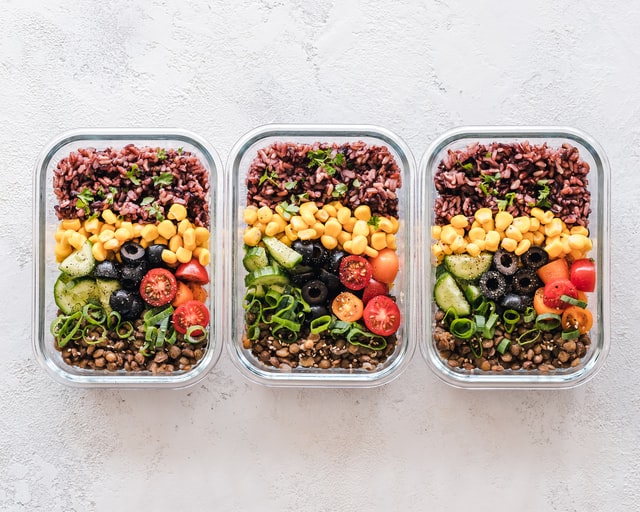
Cooking at home saves money. Cooking in large batches saves even more money. This technique will help you to save time and money by using similar ingredients for multiple meals.
For example, you can buy chicken breasts in bulk and cook them all. Freeze them. Then when you need a fast dinner, you can thaw the chicken breasts, heat them, and enjoy.
Head to Pinterest or Downshitology with Lisa Bryan to learn how to meal prep and cook large batches of food https://downshiftology.com/budget-meal-prep/
#3) Take Your Lunch

How many days do you eat out during the work week? Even if you’re going through the drive-through and eating a fast-food lunch, you could spend $30 or more weekly on lunch.
A pound of lunch meat, a loaf of bread, snacks, and a bottle of water will cost you much less than a restaurant or drive-through meal, and it’s healthier for you. Leftovers are another great option.
I think Aldi grocery store has the healthiest and cheapest lunch ingredients you’ll need to save money.
#4) Make Your Own Snacks

One of the most expensive items on your grocery receipt will undoubtedly be snacks. Not only are they expensive, many of them just aren’t good for your health.
You can make your own snacks and save hundreds annually. For example, popcorn is easy to make. You can also make granola bars, buy a food dehydrator for around $30 and make your own fruit rolls, jerky, and snack mix.
Check out Pinterest or Downshiftology with Lisa Bryan for some great snack ideas.
#5) Eat Less Meat
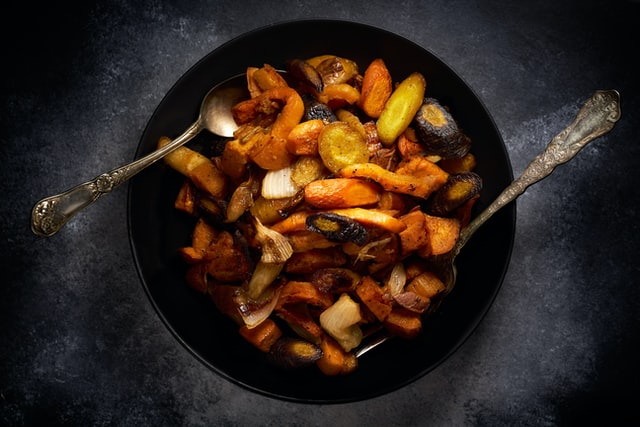
I’m not telling you to go vegan or vegetarian indefinitely, but limiting your consumption of meat might be good for your pockets and waistline.
Meat is probably the single most expensive food item on your grocery receipt. It’s easy to save money if you eat less meat.
Add one, two, or more vegetarian meals to your weekly meal plan. If you’re worried about getting enough protein, remember that beans, nuts, eggs, and dairy all provide protein.
#6) Make A List Before Going Shopping
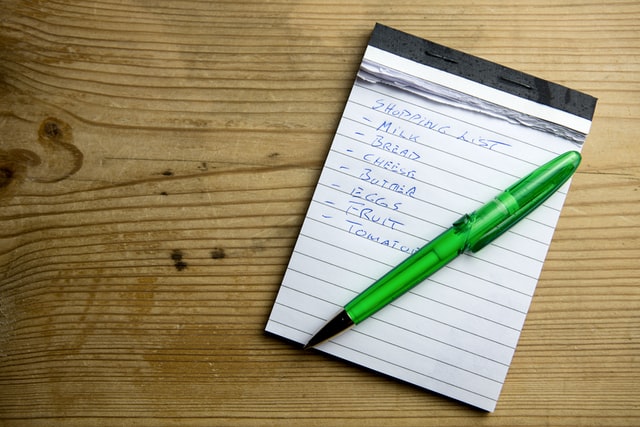
There are several rules of thumb when it comes to grocery shopping or shopping of any kind. The first and perhaps most important is to make a list of the items you need – and only the items you need.
It’s easy to toss items into your cart that you don’t need. And it’s easy to spend more than you want. Instead, make a list, stick to your weekly meal plan and budget, and save money.
I recommend writing your list down on paper or using grocery list apps such as:
- AnyList
- Mealime
- Our Groceries
- Opt Up
- Or List Ease
#7) Go Grocery Shopping When You’re Pressed for Time
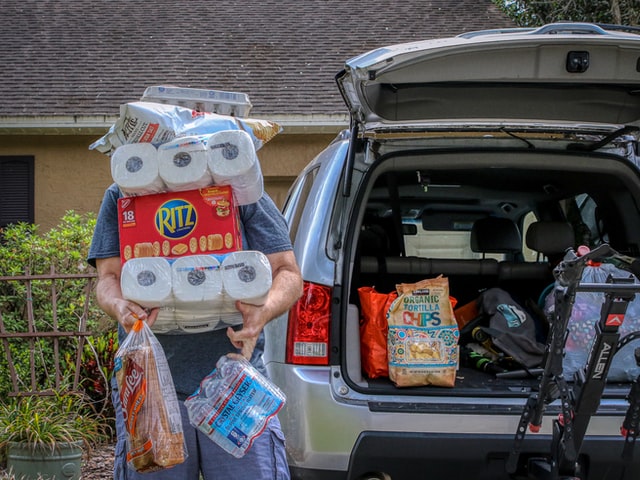
Instead of saving grocery shopping for the weekend when you have plenty of time to wander around, go when you’re in a rush.
Squeeze it in during your lunch break. Get it done in between picking up and dropping off kids. Go right before dinner (but make sure you’re not hungry).
You won’t toss extra items into your cart when you shop in a hurry and shop from a list. You’ll grab the items on your list and get out.
#8) Shop Seasonal Produce
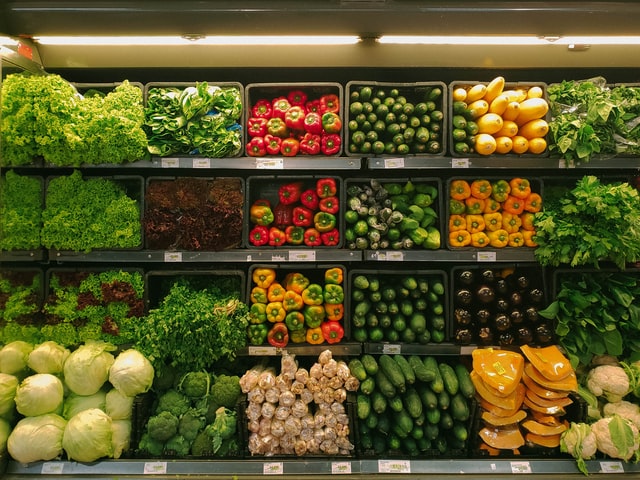
When you’re at the supermarket or making your weekly grocery list, keep in mind what is in season.
The fruits and vegetables in season will be much cheaper because they didn’t have to travel from halfway around the world to get to your table.
Consider subscribing to a recipe or cooking blog because they’ll likely post seasonal recipes, which makes it much easier for you to shop and save.
#9) Hit the Farmer’s Market
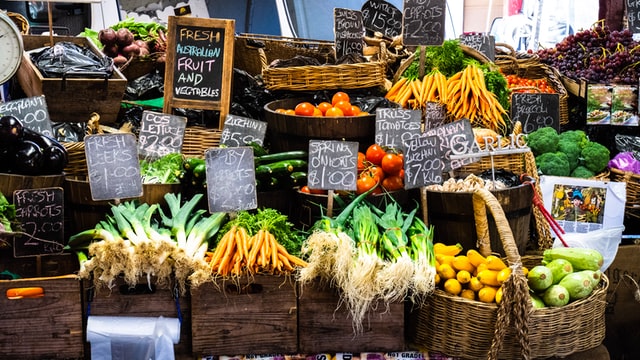
Fruits and vegetables at your farmer’s market are cheaper than at the grocery store. This is because they don’t have to pay for transportation from the farm to the stores.
They’re local. The Farmer’s Market is often fresher and contains fewer chemicals like pesticides and fungicides.
Make a day of it and head to your farmer’s market to buy your produce.
#10) Buy Store Brands

Store brands have come a long way in the past years. For example, store frozen vegetables can cost less than half of what a name brand costs.
And there’s little to no difference. Try your store-brand coffee, milk, eggs, frozen food, house cleaners, and paper products.
Over-the-counter pain killers, allergy, and cold medicines are much less expensive.
#11) Buy Non-Perishables In Bulk

Have you noticed how much you can save buying one canned food versus a pack?
Head to your Costco, Sam’s Club, or your supermarket when non-perishables are on sale and stock up. We’re talking about rice, canned food, soup, pasta, and cat and dog food.
These items can be more than 50% of your annual grocery bill and don’t have to be. Buy them in bulk and save money.
#12) Clean Out Your Refrigerator Weekly

How much food do you throw away? If you’re like the average American family, you throw away almost half of what you buy. That’s a lot of wasted food and money.
Instead of throwing away all that money, save money and clean out your refrigerator each week.
Move the food near its expiration date to the front of the refrigerator and plan your meals around that food. When freezing foods, put the date on them so you can also make sure you don’t lose foods to freezer burn.
#13) Make Your Own Coffee

If you have a daily coffee habit, consider making coffee at home. A standard coffee pot begins at around $30.
You can buy bags of bulk fresh ground coffee from Costco or Sam’s club and get 50 plus cups of coffee depending on how strong you like it. You can also buy bulk filters that cost a few dollars, and a bag of 300 will last almost an entire year, assuming you make coffee every day.
Over the course of a year, you’re spending more than $1000 on coffee buying from a coffee shop! Or you can make it yourself, just the way you like it, and spend less than $200 annually, including the coffee machine!
#14) Downsize Your Coffee

We’ve already mentioned that it’s cheaper to make your own coffee than to go to a coffee shop.
That being said, many people just don’t want to give up the occasional coffee shop treat.
You can save money by simply ordering a smaller coffee. Instead of ordering a 16-ounce coffee, order a 12-ounce coffee. You’ll save a few dollars, and it all adds up.
#15) Eat Out During Happy Hour

If you must eat out, the best bang for your bucks will be on a happy hour menu at your local restaurants.
This is a much cheaper alternative than their dinner menu, which can sometimes be double the cost.
It’s also a great way to try new restaurants and save money too.
Saving money on groceries isn’t difficult. However, it does require paying attention to details and forming better spending habits.
- Know how much money you have to work with each month.
- Approximate how much you spend on groceries every month.
- Make a plan.
- Create new habits.
- And save more money to put towards other needs or goals.
Who knows…you may inspire your friends and family to save more money too.
If you haven’t yet created a budget. You can purchase my E-Book, How to Budget: On ANY Income, here→ https://buildyoung.willitacherie.com/products/budget
Looking for more ways to save? Check out these blogs:
1. 3 Ways to Pay Off Your Debt https://willitacherie.com/3-ways-to-pay-off-your-debt/
2. 10 Tips for Buying Your Car https://willitacherie.com/ten-tips-for-car-buying/
If you want to listen to this podcast episode for more in-depth info, click here–> https://anchor.fm/willita-cherie
